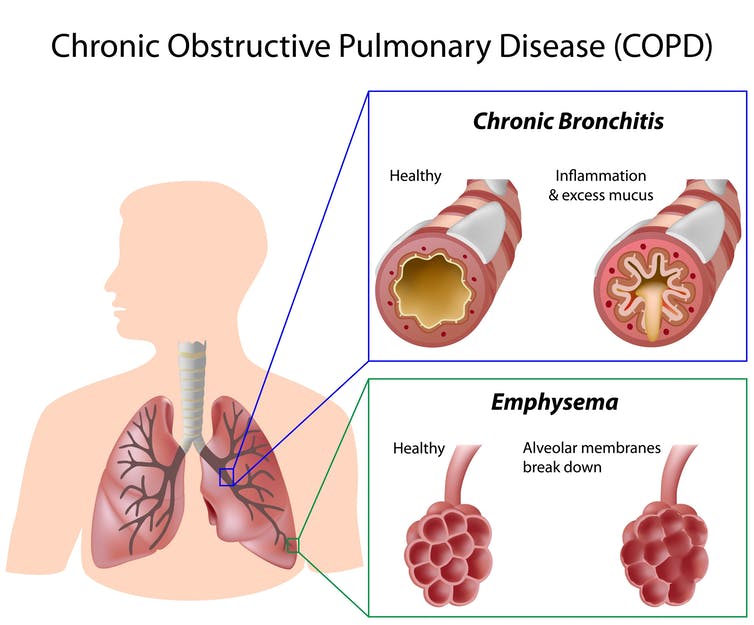
When a person is diagnosed with systemic (systemic) high blood pressure, it essentially means the force of blood pushing through the blood vessels is too great, which ultimately increases the likelihood of a stroke and heart attack. Pulmonary hypertension is in fact a specific form of hypertension that usually occurs within the lungs. When the body has too much fluid in its circulatory system, it can cause constriction of the bronchioles, which can eventually result in emphysema, pulmonary embolism, or lung cancer. There are numerous types of pulmonary hypertension, but what is most commonly associated with this condition is chronic obstructive pulmonary disease (COPD), otherwise known as chronic bronchitis or emphysema.
People suffering from COPD may develop chest pain that worsens when they are resting
If left unchecked, this pain can lead to severe complications such as emphysema and lung cancer. People who are diagnosed with COPD are often advised to avoid strenuous physical activity, but many are unable to do so for medical reasons. The result is that they are unable to maintain adequate lung function.
In addition to COPD, some forms of pulmonary hypertension are caused by smoking. For example, smokers are more susceptible to develop chronic bronchitis, and may experience persistent chest pain after exertion. Some researchers believe that this condition is related to the damage that tobacco smoke causes to the lungs, as well as the increased exposure that smokers have to secondhand smoke.
There are a number of ways to prevent pulmonary hypertension, including not smoking, exercising more, drinking more fluids, and controlling weight. However, if you do suffer from COPD or are overweight, then it's important to start a lifestyle change before it's too late. By losing weight, you can decrease the pressure on the lungs by as much as 10 pounds, so that your lungs can better pump oxygen-rich blood throughout the body. Additionally, by drinking more fluids, you will be able to flush out those excess fluids, which have been accumulating in your body.
If you're diagnosed with chronic obstructive pulmonary disease, then you may be prescribed medication, such as beta-blockers, or diuretics. These drugs are used to treat the symptoms of the disease. They can reduce the symptoms such as cough, sore throat, coughing spells, shortness of breath, wheezing, and chest pain in the chest area.
For patients with chronic obstructive pulmonary disease, doctors also recommend that they undergo a pulmonary function test known as spirometry to determine the flow of air in their lungs and the amount of fluid that are being lost through their lungs. This process is done to help determine whether or not the patient needs further treatment or intervention.
To determine the severity of the disease, doctors may perform end-expiratory catheterization (measure the amount of fluid and gas that is expelled through the lung passages). These tests are performed on an outpatient basis and can be performed as a follow-up procedure after surgery or as a routine part of a routine check-up. Many patients are given a second spirometer to monitor their progress as they take a daily cough suppressant.
The goal of treating chronic obstructive pulmonary disease is to get it under control as quickly as possible
If the disease is left untreated, it can be very difficult to keep it under control, requiring long-term treatment. Treatment usually focuses on reducing the severity and preventing complications from occurring.
In addition to drugs, the most common form of treatment for chronic obstructive pulmonary disease is surgery. If the doctor suspects that the disease is already advanced and surgery will not help, they may choose invasive treatments, including lung lobectomy, surgical removal of the lung, or lung resection known as pneumonectomy.
The risks of surgery in patients with obstructive pulmonary disease are higher than with patients who don't have the disease. One of the biggest risks is that the surgery may not work and the patient may never recover completely from the disease. Also, the surgery is extremely invasive and carries with it a risk of infection, wound healing problems, and other complications, which may require a lot of time and effort to overcome.
Obstructive pulmonary diseases are very treatable, and most people will have great results if they are properly monitored. A well-careful follow-up and regular check-ups will ensure that their lives continue to go on as normal, with little interruption, even when the disease advances.